| Listing 1 - 10 of 18 | << page >> |
Sort by
|
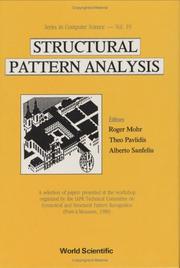
ISBN: 9810200978 Year: 1989 Publisher: Singapore New Jersey World Scientific
Abstract | Keywords | Export | Availability | Bookmark
 Loading...
Loading...Choose an application
- Reference Manager
- EndNote
- RefWorks (Direct export to RefWorks)
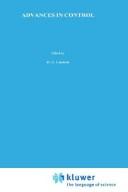
ISBN: 9027711437 9027711402 9027711291 9400990642 9400990626 9789027711403 9789027711434 9789027711298 Year: 1980 Volume: Vol. 3 Publisher: Dordrecht Boston London Reidel
Abstract | Keywords | Export | Availability | Bookmark
 Loading...
Loading...Choose an application
- Reference Manager
- EndNote
- RefWorks (Direct export to RefWorks)
Electronic data processing --- Telecommunication --- Automatic control --- Pattern recognition systems --- Congresses --- Congresses. --- Electronic data processing - Congresses --- Telecommunication - Congresses --- Automatic control - Congresses --- Pattern recognition systems - Congresses
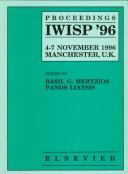
ISBN: 0444825878 9786611072605 1281072605 0080539769 9780444825872 9780080539768 Year: 1996 Publisher: Amsterdam ; New York : Elsevier,
Abstract | Keywords | Export | Availability | Bookmark
 Loading...
Loading...Choose an application
- Reference Manager
- EndNote
- RefWorks (Direct export to RefWorks)
The papers in this volume focus on the most modern and critical aspects of Image and Signal Processing and related areas that have a significant impact in our society. The papers may be categorized in the following four major parts. Coding and Compression (image coding, image subband, wavelet coding and representation, video coding, motion estimation and multimedia); Image Processing and Pattern Recognition (image analysis, edge detection, segmentation, image enhancement and restoration, adaptive systems, colour processing, pattern and object recognition and classification); F
Image processing --- Signal processing --- Coding theory --- Pattern recognition systems --- Mathematics --- Congresses. --- Image processing - Mathematics - Congresses. --- Signal processing - Mathematics - Congresses. --- Coding theory - Congresses. --- Pattern recognition systems - Congresses.
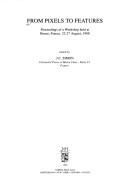
ISBN: 0444873376 9780444873378 Year: 1989 Publisher: Amsterdam North Holland
Abstract | Keywords | Export | Availability | Bookmark
 Loading...
Loading...Choose an application
- Reference Manager
- EndNote
- RefWorks (Direct export to RefWorks)
Image processing --- Pattern recognition systems --- Congresses --- -Pattern recognition systems --- -Pattern classification systems --- Pattern recognition computers --- Pattern perception --- Computer vision --- Pictorial data processing --- Picture processing --- Processing, Image --- Imaging systems --- Optical data processing --- Congresses. --- -Congresses --- Image processing - Congresses --- Pattern recognition systems - Congresses
Book
ISBN: 9784431550198 4431550186 9784431550181 1322173672 4431550194 Year: 2015 Publisher: Tokyo : Springer Japan : Imprint: Springer,
Abstract | Keywords | Export | Availability | Bookmark
 Loading...
Loading...Choose an application
- Reference Manager
- EndNote
- RefWorks (Direct export to RefWorks)
In this thesis, the author develops for the first time an implementation methodology for arbitrary Gaussian operations using temporal-mode cluster states. The author also presents three experiments involving continuous-variable one-way quantum computations, where their non-classical nature is shown by observing entanglement at the outputs. The experimental basic structure of one-way quantum computation over two-mode input state is demonstrated by the controlled-Z gate and the optimum nonlocal gate experiments. Furthermore, the author proves that the operation can be controlled by the gain-tunable entangling gate experiment.
Physics. --- Quantum Optics. --- Quantum Information Technology, Spintronics. --- Quantum Physics. --- Quantum Computing. --- Quantum theory. --- Physique --- Théorie quantique --- Computer vision -- Congresses. --- Pattern recognition systems -- Congresses. --- Technology -- Congresses. --- Physics --- Physical Sciences & Mathematics --- Atomic Physics --- Information theory. --- Communication theory --- Quantum dynamics --- Quantum mechanics --- Quantum physics --- Quantum computers. --- Quantum physics. --- Quantum optics. --- Spintronics. --- Communication --- Cybernetics --- Mechanics --- Thermodynamics --- Fluxtronics --- Magnetoelectronics --- Spin electronics --- Spinelectronics --- Microelectronics --- Nanotechnology --- Computers --- Optics --- Photons --- Quantum theory
Book
ISBN: 1447158865 0857294660 0857294679 Year: 2011 Publisher: New York : Springer,
Abstract | Keywords | Export | Availability | Bookmark
 Loading...
Loading...Choose an application
- Reference Manager
- EndNote
- RefWorks (Direct export to RefWorks)
Although there have been significant developments in the field of biometrics in recent years, much of the research in this area has focused upon the front-end technology. This unique Guide to Biometrics for Large-Scale Systems considers biometric technology in a broader light, integrating the concept more seamlessly into mainstream Information Technology, while also striving to understand the cultural attitudes and the societal impact of identity management. This approach represents a step-change in current thinking – that may come to be viewed as a milestone in the development of biometric technology – in which many established tenets are placed under considerable scrutiny. Topics and features: Summarizes the material covered at the beginning of every chapter, and provides chapter-ending review questions and discussion points Reviews identity verification in nature, and early historical interest in anatomical measurement, which form the foundations of the modern field of biometrics Provides an overview of biometric technology, presents a focus on biometric systems and true systems integration, examines the concept of identity management, and predicts future trends Investigates performance issues in biometric systems, the management and security of biometric data, and the impact of mobile devices on biometrics technology Explains the equivalence of performance across operational nodes and why this is so important, introducing the APEX system as an example of how this issue can be addressed Considers the legal, political and societal factors of biometric technology, in addition to user psychology and other human factors This highly practical reference/guidebook is an invaluable resource for program managers, application developers and consultants working in this area. Students interested in biometric technology will also find this a must-read. Julian Ashbourn is an experienced and successful author on topics ranging from computer science and identity management through to geoscience and the natural sciences in general. His publications include the Springer titles Practical Biometrics: From Aspiration to Implementation, BANTAM User Guide: Biometric and Token Technology Application Modeling Language and Geological Landscapes of Britain.
Artificial intelligence -- Congresses. --- Biometric identification -- Congresses. --- Biometric identification. --- Biometrics. --- Computer science. --- Identification -- Automation -- Congresses. --- Pattern recognition systems -- Congresses. --- Pattern recognition systems -- Mathematical models -- Congresses. --- Pattern recognition systems --- Identification --- Biometry --- Electrical & Computer Engineering --- Biology --- Health & Biological Sciences --- Engineering & Applied Sciences --- Electrical Engineering --- Biology - General --- Automation --- Pattern recognition systems. --- Biometry. --- Automation. --- Biological statistics --- Biometrics (Biology) --- Biostatistics --- Forensic identification --- Pattern classification systems --- Pattern recognition computers --- Statistical methods --- Biometrics (Biology). --- Computer Science. --- Biomathematics --- Statistics --- Pattern perception --- Computer vision
Book
ISBN: 0121709507 9780121709501 Year: 1976 Publisher: New York : Academic,
Abstract | Keywords | Export | Availability | Bookmark
 Loading...
Loading...Choose an application
- Reference Manager
- EndNote
- RefWorks (Direct export to RefWorks)
Artificial intelligence --- Pattern recognition systems --- Congresses --- -Pattern recognition systems --- -#TELE:d.d. Prof. A. J. J. Oosterlinck --- Pattern classification systems --- Pattern recognition computers --- Pattern perception --- Computer vision --- AI (Artificial intelligence) --- Artificial thinking --- Electronic brains --- Intellectronics --- Intelligence, Artificial --- Intelligent machines --- Machine intelligence --- Thinking, Artificial --- Bionics --- Cognitive science --- Digital computer simulation --- Electronic data processing --- Logic machines --- Machine theory --- Self-organizing systems --- Simulation methods --- Fifth generation computers --- Neural computers --- Congresses. --- #TELE:d.d. Prof. A. J. J. Oosterlinck --- Intelligence artificielle --- Langages de programmation --- Artificial intelligence - Congresses --- Pattern recognition systems - Congresses
Book
ISBN: 3319009680 3319009699 Year: 2013 Publisher: Cham : Springer International,
Abstract | Keywords | Export | Availability | Bookmark
 Loading...
Loading...Choose an application
- Reference Manager
- EndNote
- RefWorks (Direct export to RefWorks)
The computer recognition systems are nowadays one of the most promising directions in artificial intelligence. This book is the most comprehensive study of this field. It contains a collection of 86 carefully selected articles contributed by experts of pattern recognition. It reports on current research with respect to both methodology and applications. In particular, it includes the following sections: Biometrics Data Stream Classification and Big Data Analytics Features, learning, and classifiers Image processing and computer vision Medical applications Miscellaneous applications Pattern recognition and image processing in robotics Speech and word recognition This book is a great reference tool for scientists who deal with the problems of designing computer pattern recognition systems. Its target readers can be the as well researchers as students of computer science, artificial intelligence or robotics.
Artificial intelligence. --- Image processing -- Digital techniques -- Congresses. --- Optical pattern recognition. --- Pattern recognition systems -- Congresses. --- Engineering & Applied Sciences --- Computer Science --- Computer vision --- Optical pattern recognition --- Engineering. --- Pattern recognition. --- Computational intelligence. --- Computational Intelligence. --- Artificial Intelligence (incl. Robotics). --- Pattern Recognition. --- Intelligence, Computational --- Artificial intelligence --- Soft computing --- Design perception --- Pattern recognition --- Form perception --- Perception --- Figure-ground perception --- AI (Artificial intelligence) --- Artificial thinking --- Electronic brains --- Intellectronics --- Intelligence, Artificial --- Intelligent machines --- Machine intelligence --- Thinking, Artificial --- Bionics --- Cognitive science --- Digital computer simulation --- Electronic data processing --- Logic machines --- Machine theory --- Self-organizing systems --- Simulation methods --- Fifth generation computers --- Neural computers --- Construction --- Industrial arts --- Technology --- Artificial Intelligence. --- Optical data processing --- Pattern perception --- Perceptrons --- Visual discrimination --- Pattern recognition systems --- Image processing --- Digital techniques
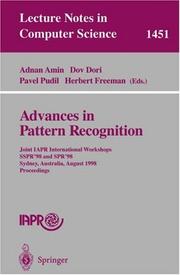

ISBN: 3540648585 9783540648581 354068526X Year: 1998 Volume: 1451 Publisher: Berlin [etc.] : Springer-Verlag,
Abstract | Keywords | Export | Availability | Bookmark
 Loading...
Loading...Choose an application
- Reference Manager
- EndNote
- RefWorks (Direct export to RefWorks)
This book constitutes the joint refereed proceedings of the two IAPR International Workshops on Structural and Syntactic Pattern Recognition and on Statistical Techniques in Pattern Recognition, SSPR'98 and SPR'98, held in Sydney, Australia, in August 1998. The book presents 107 revised full papers selected from 134 submissions. Also included are six invited presentations. The papers are organized in topical sections on structural matching and grammatical inference, recognition of 2D and 3D objects, document image analysis and recognition, handwritten character recognition, shape representation and image segmentation, learning methodologies, feature selection and extraction, statistical classification techniques, statistical pattern recognition, and rejection in pattern recognition.
Pattern recognition systems --- Electrical Engineering --- Electrical & Computer Engineering --- Engineering & Applied Sciences --- Computer science. --- Artificial intelligence. --- Image processing. --- Pattern recognition. --- Computer Science. --- Pattern Recognition. --- Artificial Intelligence (incl. Robotics). --- Image Processing and Computer Vision. --- Congresses --- Optical pattern recognition. --- Computer vision. --- Artificial Intelligence. --- Machine vision --- Vision, Computer --- Artificial intelligence --- Image processing --- Optical data processing --- Pattern perception --- Perceptrons --- Visual discrimination --- AI (Artificial intelligence) --- Artificial thinking --- Electronic brains --- Intellectronics --- Intelligence, Artificial --- Intelligent machines --- Machine intelligence --- Thinking, Artificial --- Bionics --- Cognitive science --- Digital computer simulation --- Electronic data processing --- Logic machines --- Machine theory --- Self-organizing systems --- Simulation methods --- Fifth generation computers --- Neural computers --- Optical data processing. --- Optical computing --- Visual data processing --- Integrated optics --- Photonics --- Computers --- Design perception --- Pattern recognition --- Form perception --- Perception --- Figure-ground perception --- Optical equipment --- Pattern recognition systems - Congresses
Book
ISBN: 9788132219859 8132219848 9788132219842 1322173974 8132219856 Year: 2015 Publisher: New Delhi : Springer India : Imprint: Springer,
Abstract | Keywords | Export | Availability | Bookmark
 Loading...
Loading...Choose an application
- Reference Manager
- EndNote
- RefWorks (Direct export to RefWorks)
This book contains the extended version of the works that have been presented and discussed in the First International Doctoral Symposium on Applied Computation and Security Systems (ACSS 2014) held during April 18-20, 2014 in Kolkata, India. The symposium has been jointly organized by the AGH University of Science & Technology, Cracow, Poland and University of Calcutta, India. The Volume I of this double-volume book contains fourteen high quality book chapters in three different parts. Part 1 is on Pattern Recognition and it presents four chapters. Part 2 is on Imaging and Healthcare Applications contains four more book chapters. The Part 3 of this volume is on Wireless Sensor Networking and it includes as many as six chapters. Volume II of the book has three Parts presenting a total of eleven chapters in it. Part 4 consists of five excellent chapters on Software Engineering ranging from cloud service design to transactional memory. Part 5 in Volume II is on Cryptography with two book chapters in it. Part 6 of this volume is on Computer Aided Design with four chapters in it. We strongly believe that the twenty five chapters in these two volumes of Applied Computation and Security Systems will be appreciated by all its readers.
Engineering. --- Signal, Image and Speech Processing. --- Computational Intelligence. --- Communications Engineering, Networks. --- Telecommunication. --- Ingénierie --- Télécommunications --- Computer architecture -- Congresses. --- Image processing -- Digital techniques -- Congresses. --- Pattern recognition systems -- Congresses. --- Wireless sensor networks -- Congresses. --- Engineering & Applied Sciences --- Electrical & Computer Engineering --- Telecommunications --- Electrical Engineering --- Applied Physics --- Computer networks --- Computers --- Security measures. --- Access control. --- Computer network security --- Network security, Computer --- Security of computer networks --- Computational intelligence. --- Electrical engineering. --- Electric engineering --- Engineering --- Intelligence, Computational --- Artificial intelligence --- Construction --- Industrial arts --- Technology --- Soft computing --- Computer security --- Electric communication --- Mass communication --- Telecom --- Telecommunication industry --- Communication --- Information theory --- Telecommuting --- Signal processing. --- Image processing. --- Speech processing systems. --- Computational linguistics --- Electronic systems --- Modulation theory --- Oral communication --- Speech --- Telecommunication --- Singing voice synthesizers --- Pictorial data processing --- Picture processing --- Processing, Image --- Imaging systems --- Optical data processing --- Processing, Signal --- Information measurement --- Signal theory (Telecommunication)
| Listing 1 - 10 of 18 | << page >> |
Sort by
|

 Search
Search Feedback
Feedback About UniCat
About UniCat  Help
Help News
News